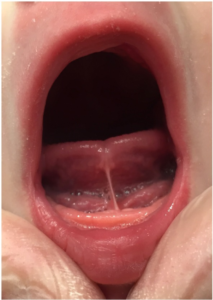As a lactation consultant with years of experience working with NYC families and a background in public health research, I often see breastfeeding challenges that extend beyond latch techniques or milk supply. Sometimes, no matter how many positions we try or adjustments we make, feedings remain uncomfortable or ineffective. That’s when I start to consider underlying physical issues that might be affecting your baby’s ability to breastfeed — and that’s where bodywork can make a significant difference.
Bodywork, including chiropractic care and craniosacral therapy (CST), can address structural issues that impact feeding. For instance, if your baby was born with torticollis (tight neck muscles that cause the head to tilt to one side) or experienced a challenging birth (like a long labor, vacuum, or forceps delivery), these physical stressors can affect how they move and latch. Similarly, babies with oral restrictions, such as tongue or lip ties, often develop tension patterns in the jaw, neck, and even the cranial bones, making feeding more difficult and sometimes painful.
Craniosacral therapy is a gentle, hands-on technique that aims to relieve tension and improve movement within the cranial bones, spinal column, and sacrum. Practitioners use light touch to release restrictions and enhance the body’s natural ability to heal and self-regulate. Craniosacral therapists typically undergo specialized training through accredited programs, which include both coursework and practical experience. Many are licensed healthcare providers, such as massage therapists, physical therapists, or chiropractors, who have pursued advanced certification in CST. It’s important to choose a practitioner with experience working specifically with infants to ensure safe and effective care.
Research increasingly supports the use of bodywork to alleviate these issues. Studies show that techniques like CST can help improve oral motor function by releasing tight fascia and improving mobility in the jaw and neck. Chiropractic adjustments, particularly when performed by a provider experienced with infants, can realign the spine and reduce discomfort that might be interfering with breastfeeding. The goal is to support your baby’s body in working more harmoniously, allowing for easier, more effective feeding.
In practice, I’ve seen babies who couldn’t latch well before treatment suddenly nurse with much less effort and discomfort after a few sessions of bodywork. Parents often report that their baby seems more relaxed, feeds more efficiently, and even sleeps better. While bodywork isn’t a one-size-fits-all solution, it can be a game-changer, especially when we’ve exhausted more conventional feeding strategies. I always encourage families to work with professionals trained specifically in infant bodywork to ensure safe and effective care.
If you’re navigating breastfeeding challenges and think bodywork might help, let’s discuss your baby’s specific needs. Together, we can create a plan that addresses not just feeding techniques but also the underlying physical factors that may be holding your baby back. In NYC, we’re fortunate to have many skilled bodyworkers who specialize in working with infants — I’m happy to point you in the right direction and collaborate to support your breastfeeding journey.


